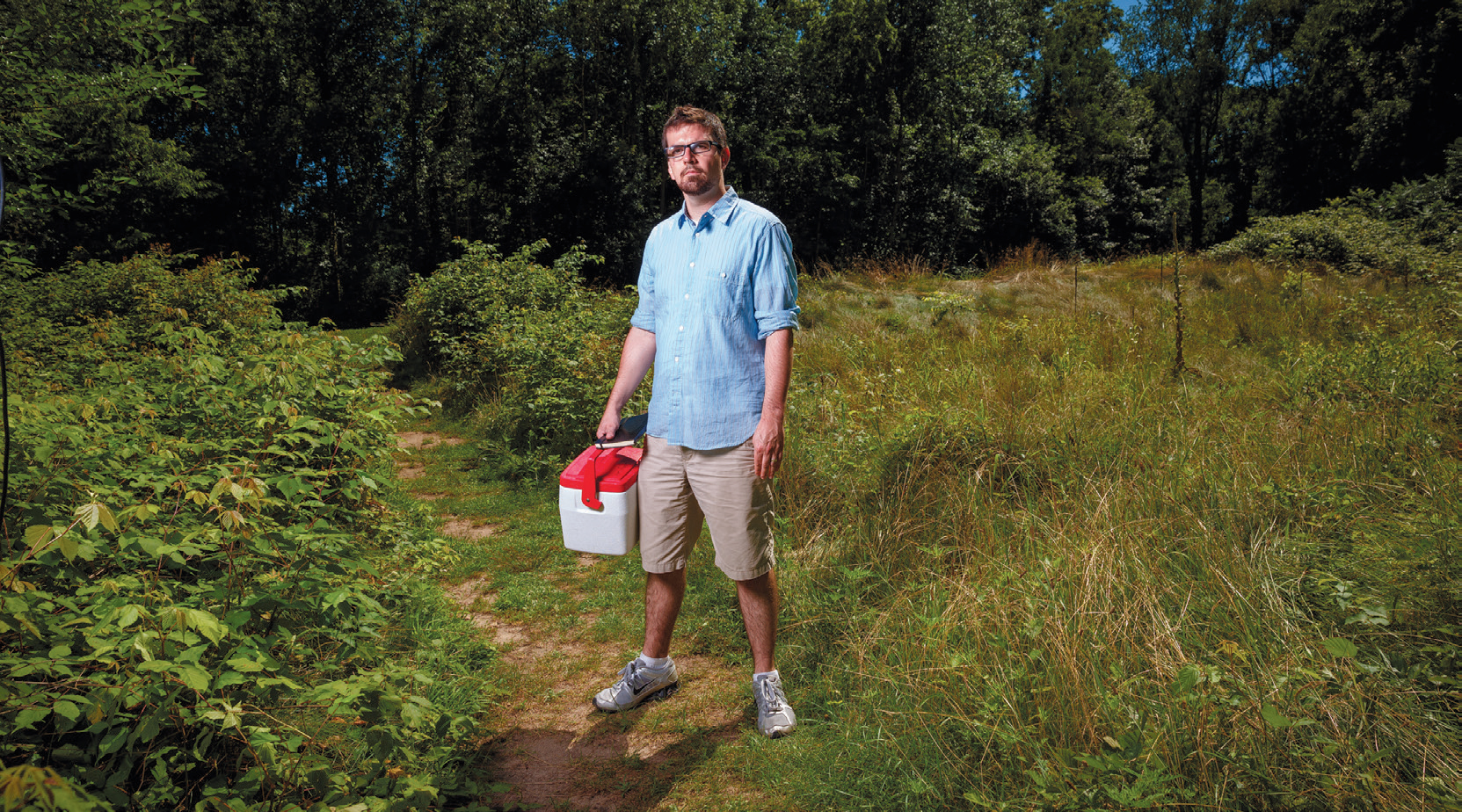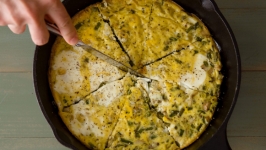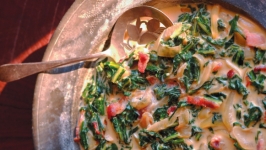If You Can't Beat 'Em, Eat 'Em!
Autumn olives are a familiar feature of Michiana’s fall landscape: shrubby plants with small red berries. Foragers enjoy using the sweet berries to make pies, jams and even homebrewed wine. But what many don’t realize is that these plants aren’t native to our area. In fact, they are an invasive species—one that takes over new environments, crowding out native species and, in the process, reducing biodiversity. (For more about autumn olives, see the Fall 2012 issue of Edible Michiana.)
In fact, many familiar wild species in our area are outside invaders, introduced accidentally or intentionally by people who did not realize the impact they would have on the local ecology. Invasive species are managed by containment and removal—with varying degrees of success. But a group of young scientists at the University of Notre Dame is offering a much tastier way to fight back against these troublesome plants and animals: Eat them!
EDIBLE INVADERS
Notre Dame’s Invasivore.org (think “-vore” as in carnivore and herbivore) was created three years ago by graduate students in the university’s Global Linkages of Biology, the Environment and Society (GLOBES) program. Founders Matthew Barnes, Sheina Shim and Andy Deines all do research in ecology, and, in one way or another, they are especially interested in understanding and dealing with invasive species.
As Barnes (now a postdoctoral research fellow at Notre Dame) explains, one component of the GLOBES program is public education and outreach. GLOBES scholars challenge the stereotype of the ivory tower intellectual. These scientists investigate real-world problems and aim to share their findings with the general public. Invasive plants and animals are a major problem around the world, and Invasivore.org was created as a clever and delicious way of explaining the problem.
The invasivore blog features profiles of invasive species (where they originated, where they are now and why they are a problem); recipes ranging from simple variations on familiar foods—such as fettuccine with Chinese mystery snail in place of clams—to the highly experimental—such as garlic mustard ice cream—and weekly or biweekly “Out to Eat!” posts that share interesting invasivore links from around the web.
THE ECOLOGY OF INVASION
Asian carp have gotten a lot of press in recent years as they have gradually moved their way up the Mississippi River toward the Great Lakes. They are large fish, and the basic worry is that they will simply out-eat their native cousins. They also leap out of the water when startled and, in a few cases, have seriously injured boaters.
Barnes says that a biological invasion is a three-step process. First, in their native habitat, the invasive organisms encounter a means of reaching a new environment. Usually this has something to do with humans and can be either intentional (like the introduction of autumn olives for erosion control) or not (like Asian carp getting into ballast tanks of oceangoing ships). Second, the organisms are introduced into the new environment; and third, they establish a population, spread and cause negative environmental or economic impacts.
In many cases, species will go through the first one or two of these steps but lack the biological potential to spread and cause damage. True invasive species are the ones that have that potential. For example, in its native European habitat, garlic mustard is kept in check by grazers and competition with other plants. But deer in North America don’t like its spicy-pungent flavor. And it produces a chemical that stunts the growth of several North American plants. With these checks removed, garlic mustard is free to invade.
EAT WITH AWARENESS
Asian carp are said to taste better than common carp. (Some fans of the fish call them silverfin or Kentucky tuna.) Garlic mustard and Chinese mystery snails are also highly edible: Both were originally introduced in the United States as foods. But the Notre Dame invasivores emphasize that eating these plants and animals needs to be done with awareness of the problems associated with invasive species.
One concern is that a demand for edible invasives could end up encouraging their spread. If garlic mustard pesto takes off, for instance, growers might plant it intentionally, rather than harvesting wild populations.
So we need to keep the emphasis on “invasive” in “invasivore.” Sharing your autumn olive jam—whether with a friend or a few dozen customers—can be a teachable moment, along with a tasty one. Use the opportunity to explain what invasive species are and why they’re such a problem. And, of course, that many of them are delicious.








